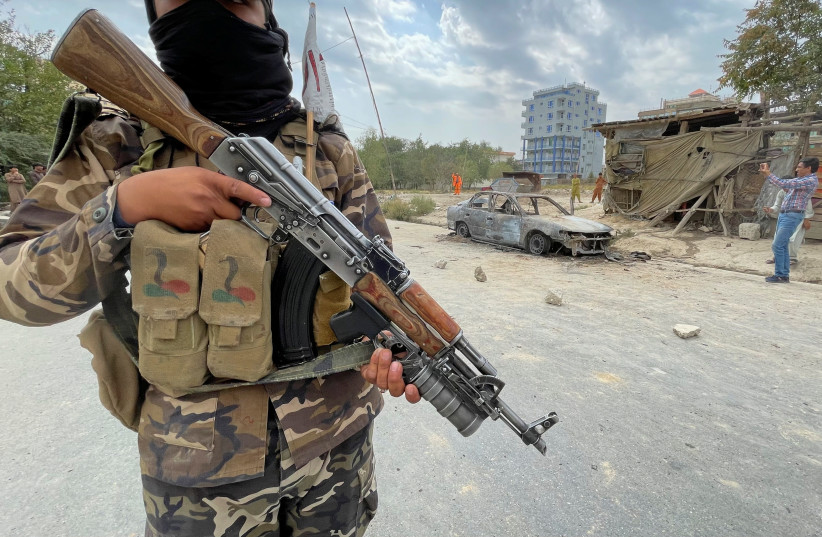The Taliban may have selected a terrorist wanted by the United States as the interior minister of the new government they are forming, according to reports.
Sirajuddin Haqqani is the Taliban’s deputy leader and also runs the Haqqani network, a designated terrorist organization. Up until recently the FBI was offering $5 million for information on him, and using sketches of what he might look like.
It seems that now his appearance and location will be better known. The US apparently still lacks key details about Haqqani, such as when he was born. But that hasn’t been an issue for the terrorist leader as he rose to prominence. Reports say that not only is his network a vicious terrorist group, but he has had connections to other extremists, such as al Qaeda. In February 2020, Haqqani got even more legitimacy when The New York Times published his op-ed.
According to the FBI's Rewards For Justice Program, the “United States Department of State is offering a reward of up to $5 million for information leading directly to the arrest of Sirajuddin Haqqani.” The US says that “Haqqani is thought to stay in Pakistan, specifically the Miram Shah, North Waziristan, Pakistan, area. He is reportedly a senior leader of the Haqqani network, and maintains close ties to the Taliban and al Qaeda. Haqqani is a specially designated global terrorist.”
It seems he will now be staying in Kabul as the new government's interior minister or temporary minister. He may have his own photographers, public relations firm and focus groups to work with him to pitch his op-eds and increase his image in the West. It is unclear why Washington continues to pretend it doesn't know where he is or what he looks like.

THE US says that “Sirajuddin Haqqani is wanted for questioning in connection with the January 2008 attack on a hotel in Kabul, Afghanistan, that killed six people, including an American citizen. He is believed to have coordinated and participated in cross-border attacks against United States and coalition forces in Afghanistan. Haqqani also allegedly was involved in the planning of the assassination attempt on Afghan President Hamid Karzai in 2008.”
It’s unclear why he was able to send op-eds to a major US newspaper. Haqqani was probably linked to the Taliban talks in Doha, Qatar, with the United States while also being on the wanted list. Is this because the US government’s FBI still doesn’t speak to the US intelligence services, or even to key White House and State Department staff who deal with the Taliban?
The US says that Haqqani has a dozen aliases, but these days it appears he will only need his one name as he ascends to power in Kabul. The FBI can probably now ask the Taliban spokesperson to provide an exact date and location of his birth, since he will now be a government official and may have his own website with these details. America's wanted posters for Haqqani do not note if he has black or brown eyes. This may also be determined soon.
This bizarre fiasco – whereby a wanted terrorist is apparently going to be a minister in the new Taliban-led government while the US continues to claim it doesn’t know where he is – will soon sink in as yet another twist in the strange saga of how the Taliban were being seen as “terrorists” by one part of the US government, while another part was eagerly engaging with them in Qatar, and even considering how to work with them when they came to power.
It will be another saga in the strange tale of how the US left Afghanistan as the Taliban swept to power; how the Taliban are now armed to the teeth with abandoned US weapons; how they likely received training abroad in foreign countries and now have the support of Pakistan, Qatar, Iran, China, Russia and other countries; and how they have access to technology and finances they never had in the 1990s – and are far stronger than they were in the past, with leading terrorists running the government and being “engaged” by Western governments that see them as potential partners.
All this may make other wanted terrorists and designated terrorist groups wonder whether one day they, too, will come to power – or whether the US designations have any real teeth to them.
